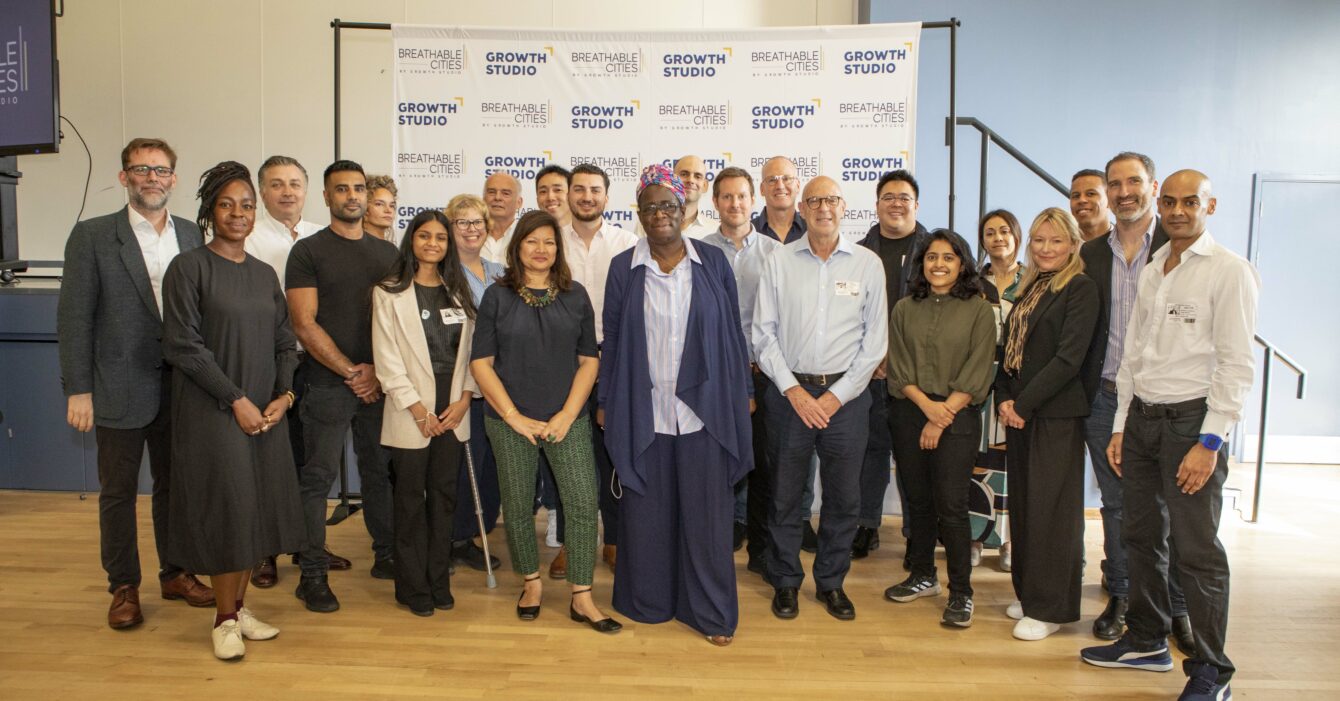Author: Paul Finch, Co-Founder: Breathable Cities
Recently, we launched 11 air quality startups from our Breathable Cities accelerator programme into the investment ecosystem and local London testbeds.
As a mission to combat air pollution and its disastrous human health effects, this has been a first of its kind programme, imbued with passion, pace and personal pride.
We designed Breathable Cities, supported by Impact on Urban Health to ignite change and meaningful impact. It’s about rapid and necessary innovation focused on cleaning up the air we breathe – both outdoors and indoors.
This is such an urgent problem to fix. 7-9 million deaths every year worldwide are attributed to air pollution. That’s more than AIDS, war and malaria put together. 43,000 UK deaths per year with 600,000 childhood deaths globally every single year due to respiratory tract infections, again, attributed to air pollution.
And what’s more, if you live in a deprived part of any country or city, you are more likely to be impacted by air pollution but least likely to contribute to it.
If you are BAME, you are 3 times more likely to breathe illegal levels of air pollution. And if you are an expectant mother with a consistent exposure to PM2.5 during pregnancy, you have an increased risk of premature birth, stillbirth, child mortality and decreased average birth weight.
Our diverse startups are driven to disrupt this status quo. From predicting internal and external asthma triggers using AI, to rapid retrofitting of diesel to electric buses and clean scrubbing devices for public spaces, their innovations have enabled us all to indulge in hope about cleaning up the state of our air here in the UK and across the world. You can find out more about their stories here.
But while the mission led energy of our Breathable Cities cohort is intoxicating, it is flecked with the tough reality of navigating real and palpable inertia amongst stagnant air quality stakeholders.
My recent talk at the London Climate Tech Show ‘The Dirty Reality Behind The Fight To Clean Our Air’ reveals many of the reasons why clean air innovation doesn’t receive the support and attention that it should. And why change is way too slow.
-
- Suffering is marginalised. Particularly the people making the policy decisions. They are not those most impacted and affected by air pollution. Quite simply they do not live on the busy roads or in the poor areas of a city. They are not suffering. At least not yet.
-
- Inadequate leadership. Our government lacks ambition, creative policy, adequate funding direction and future-focused planning. Our government in the UK are not taking the lead in treating air quality as a global health crisis, and instead focusing on micro-budgets and micro-impact.
Despite extensive pushback, criticism, and politicisation, Sadiq Khan’s ULEZ scheme is what we need to be doing. However, we need the government to create the infrastructure and funding around such initiatives to create the public transport infrastructure, adequate replacement-vehicle funding, and education. Trying to fix air pollution in silo is setting it up to fail.
-
- Reposition air quality cost. Focusing on climate resilience and air quality as a cost burden rather than a giant economic opportunity in fixing it. This approach is hampering investment, stifling job creation and innovation.
-
- Lonely and isolated. Air pollution as an issue sits alone. Government leaders talk a lot about net zero gains and goals but don’t include tackling air pollution within that vision or ambition.
According to Dr Soumya Swanimathan, former Chief Scientist at the World Health Organisation, we need to realise that everything in this climate emergency is interconnected. “Climate change is causing extreme weather and fuelling wildfires which further pollute the air and exacerbate the warming of our planet. Whilst healthcare workers may be at the sharp end (of air pollution impact), the responsibility to act falls heavily on policy makers, governments and development funders to enable the action we need”.
We need systemic change to public transport, health, local funding, industry, construction and building design. A local council air quality budget is so insignificant that on its own, it won’t change anything.
-
- We are not creating the environment for industry to help. We need ambition, commitment and consistency. Changing policy (such as our recent policy u-turn on shifting back to 2035 for new electric sales) means that industry cannot make longer term plans to electrify their fleets if policy keeps changing.
Restrictive regulation can enhance innovation if we put the right funding, tax incentives, rigour and consistent policy approach behind it. Without commitment and consistency, we cannot expect industry to help us.
-
- Air quality has become weaponized. Some politicians, particularly in the UK, are using the debate about air pollution as a tool to create polarisation, derision and distraction. To undermine opposition rather than create resolution.
The ULEZ scheme is a great case in point. Championed by Labour London Mayor Sadiq Khan, ULEZ was introduced as a way to reduce emissions by removing older polluted vehicles from London’s roads. And evidence shows that has reduced PM2.5 by 19% and NOX by 26%.
And yet it’s become a controversy and has been touted by political opponents as the ‘poor tax’ because it targets those on low incomes, most likely to own older vehicles. What’s more, the £2,000 scrappage compensation scheme is inadequate for replacement vehicles with even further allegations that it’s a cash grab strategy by City Hall.
LTNs or Low Traffic Neighbourhoods are another example. Designed to encourage more walking, cycling and limit driving in general, the scheme was launched in 2020 with £225m funding and an estimated 30 LTNs are now in operation in the UK. And yet their introduction has been fuelled by argument.
Resistance centres around the fact that the scheme has been poorly planned and in fact, ends up pushing traffic elsewhere – not reducing traffic. There are also accusations there has been a lack of community engagement in decision-making and the new road schemes cause delays for emergency services.
-
- Credible data is hard to find. We are drowning in politically charged, ambiguous data. No one single source of data represents a universal truth and this makes decision making challenging and conspiracies easy.
-
- Startups and innovators struggle to launch. The startup landscape is TOUGH for founders and investment is even tougher to come by. It’s why there are so few of them – despite the size of the problem. Read more about this investment challenge here.
So what can we do?
Firstly… breathe. Seriously. Walk around your city centre, busy B-road, and just inhale; taste and be conscious of the quality of air around you. The likelihood is that to date, you haven’t noticed quite how bad the air is.
Secondly, demand action. Vote. Demand that your local council has adequate policy and thinking in place for their clean air policies. Ask your local councillors hard questions. Sense check that they have; is their LTN adequately planned? Are they aware of the implications? Have you pushed for better public transport in the area as an alternative to public transport?
Thirdly, measure. There are plenty of air quality measuring platforms, sites, and maps available online. Look for the pollution spikes from weather, traffic, idling traffic, and try to avoid poor air quality where you can.







